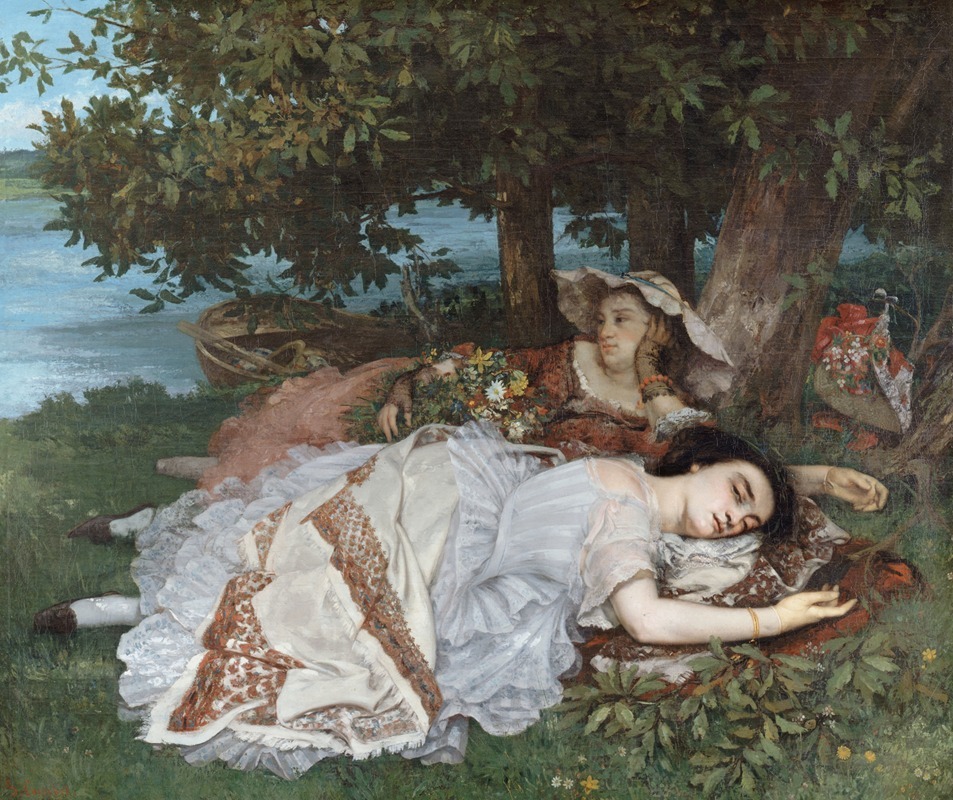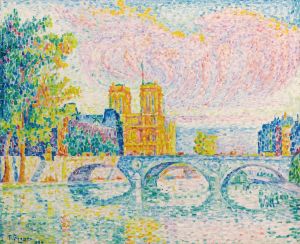
Les demoiselles des bords de la Seine
A hand-painted replica of Gustave Courbet’s masterpiece Les demoiselles des bords de la Seine, meticulously crafted by professional artists to capture the true essence of the original. Each piece is created with museum-quality canvas and rare mineral pigments, carefully painted by experienced artists with delicate brushstrokes and rich, layered colors to perfectly recreate the texture of the original artwork. Unlike machine-printed reproductions, this hand-painted version brings the painting to life, infused with the artist’s emotions and skill in every stroke. Whether for personal collection or home decoration, it instantly elevates the artistic atmosphere of any space.
"Les Demoiselles des bords de la Seine" (The Young Ladies on the Banks of the Seine) is a notable painting by the French artist Gustave Courbet, completed in 1857. Courbet, a leading figure in the Realist movement, was known for his commitment to painting everyday scenes and people, often challenging the conventions of his time. This particular work exemplifies his approach to realism and his interest in depicting contemporary life.
The painting portrays two women lounging by the Seine River, a popular leisure spot in Paris. The women are depicted in a relaxed, almost languid pose, lying on the grass with their dresses slightly disheveled, suggesting a sense of intimacy and informality. This portrayal was quite provocative for its time, as it diverged from the idealized representations of women that were prevalent in academic art. Courbet's depiction of the women in a natural setting, with an emphasis on their physical presence and the texture of their clothing, highlights his focus on realism and the human form.
Courbet's choice of subject matter and style in "Les Demoiselles des bords de la Seine" was met with mixed reactions. At the time of its exhibition, the painting was considered scandalous by some critics and viewers due to its candid representation of women in a private moment. The work challenged the traditional norms of beauty and propriety, which often dictated the portrayal of female subjects in art. Courbet's emphasis on realism and his rejection of idealization were seen as radical, contributing to the ongoing debates about the role of art in society.
The painting is characterized by Courbet's use of rich, earthy tones and his attention to detail. The lush greenery of the riverbank and the flowing water of the Seine are rendered with a sense of immediacy and vibrancy, drawing the viewer into the scene. Courbet's brushwork is both precise and expressive, capturing the textures of the natural environment and the fabrics worn by the women. This attention to detail and texture is a hallmark of Courbet's style and reflects his dedication to portraying the world as he saw it.
"Les Demoiselles des bords de la Seine" is housed in the Petit Palais, the City of Paris Museum of Fine Arts. The painting remains an important example of Courbet's work and a significant piece within the Realist movement. It continues to be studied and appreciated for its bold approach to subject matter and its contribution to the evolution of modern art.
Courbet's influence on the art world extended beyond his own work, as he inspired future generations of artists to explore new themes and techniques. His commitment to realism and his willingness to challenge societal norms paved the way for later movements, such as Impressionism and Modernism, which further expanded the boundaries of artistic expression.
In summary, "Les Demoiselles des bords de la Seine" is a quintessential example of Gustave Courbet's Realist style, showcasing his skill in capturing the essence of contemporary life and his challenge to traditional artistic conventions. The painting's historical significance and its impact on the art world make it a valuable piece for both art historians and enthusiasts alike.


















